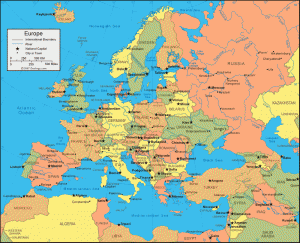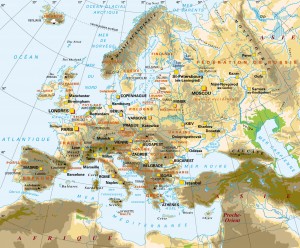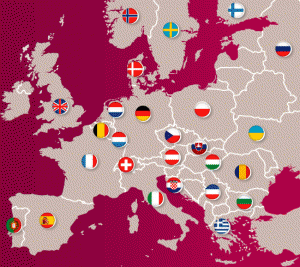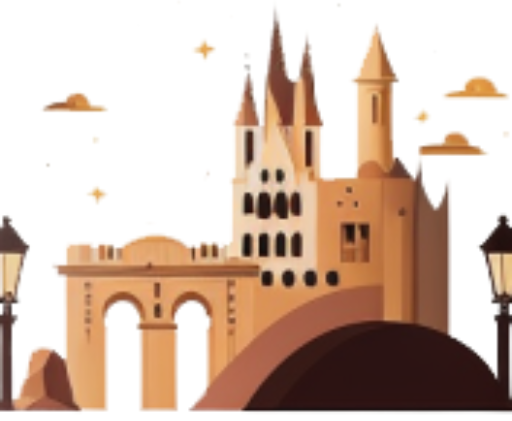 Europe is a land area which can be viewed either as a continent in its own right or as the western extremity of the Eurasian continent, even as a sub-parts of the super continent of Afro-Eurasia, by location of view. It is sometimes called the “Old Continent”, as opposed to the “New World” (America). On the cultural front, Europe has been a multiplicity of influences over the ages, and includes many countries that possess both a common heritage of linguistic, religious and historical and recent contributions from the “New World “and the Afro-Eurasia, particularly in former colonial powers. As such, Europe is a community of peoples, which tends to be politically, with the European Union, in an area of open civilization, forged in part by a millennial history, and secondly by mondialisation
Europe is a land area which can be viewed either as a continent in its own right or as the western extremity of the Eurasian continent, even as a sub-parts of the super continent of Afro-Eurasia, by location of view. It is sometimes called the “Old Continent”, as opposed to the “New World” (America). On the cultural front, Europe has been a multiplicity of influences over the ages, and includes many countries that possess both a common heritage of linguistic, religious and historical and recent contributions from the “New World “and the Afro-Eurasia, particularly in former colonial powers. As such, Europe is a community of peoples, which tends to be politically, with the European Union, in an area of open civilization, forged in part by a millennial history, and secondly by mondialisation
The terrestrial boundaries of Europe have always been imprecise in their part because there is no clearly defined boundary, relief, or sea from clear divide Eurasia. In addition, do not confuse the concepts of territorial and geographical Europe, on the one hand, and the zone of influence of Western culture, on the other hand, these notions are primarily political (in fact some think in this regard that, like the British Commonwealth, the European Union could be defined as the extent of the Euro-Western culture throughout the world).
 In purely geographical vision, Europe is usually separated from Asia to the east by the mountains of the Urals and the Ural River. South-east, the Caspian Sea, the mountains of the Caucasus, Black Sea and the Bosphorus Strait separating it from the Middle East. South and south-west, the Mediterranean and the Strait of Gibraltar separates Europe from Africa. The mainland is bordered to the west by the Atlantic Ocean and north by the Arctic. Are considered European Iceland (geologically located on the separation between Europe and America), and the main islands of the Mediterranean, Cyprus is the case, however, particularly debatable, both geographically, culturally, politically and historically.
In purely geographical vision, Europe is usually separated from Asia to the east by the mountains of the Urals and the Ural River. South-east, the Caspian Sea, the mountains of the Caucasus, Black Sea and the Bosphorus Strait separating it from the Middle East. South and south-west, the Mediterranean and the Strait of Gibraltar separates Europe from Africa. The mainland is bordered to the west by the Atlantic Ocean and north by the Arctic. Are considered European Iceland (geologically located on the separation between Europe and America), and the main islands of the Mediterranean, Cyprus is the case, however, particularly debatable, both geographically, culturally, politically and historically.
The case of Russia and Turkey are emblematic of the political and geographical gap. These two nations with the largest part of its territory in Asia (Russia) and Middle East (Turkey), the political does not overlap with the “plan” Geographical first. Thus, if Russia is Western in its culture, its history and part of its territory, its center of gravity makes it a quasi-continent, extending from the Pacific into Europe. The case is more complex for Turkey, the latter having much of its territory in the Middle East, and by history with a mixed culture between Western culture and the Middle East.
A famous quote by Paul Valery [ref. necessary] sums up the ambiguity of the strict demarcation of borders east and south-east Europe, as described Europe as “the small tip of the Asian continent.” Furthermore, he proposed his own definition of Europe: it would be all areas affected by the triple influence:
of Hellenism (philosophy, reason, republic and democracy, art and technology, science, humanism);
of the Roman (Latin, the importance of law, essential relationship to texts and writing, administrative territories, expansive imperialism);
Christianity (monotheism, moral values of forgiveness and love of neighbor, expansive moral missionaries);
the whole forming since the Renaissance, the common cultural heritage of the European humanist philosophy.
Several Atlantic islands (Madeira, Canaries, Azores), as geography does not link to this continent, are considered by the European origin of their people and their culture. It is also the case of Greenland, which belongs to Denmark. Some former colonial powers of Western Europe have retained some territories outside the continent whose inhabitants are European, and integrated at different levels within the EU, such as departments and overseas territories of France .
Europe has an area of just over 10 million square kilometers, just 10,392,855 km ². This represents one third of Africa or fourth in Asia or America.
There are five main geographical regions:
Western Europe;
Central Europe;
Southern Europe;
Eastern Europe;
Northern Europe.
The organization of space shows an economic heart, the “blue banana” or European megalopolis, which includes Europe’s Rhine and the European peripheries.
The eastern borders of Europe are mainly political: the boundary of the Urals is due to the cartographers of Tsar Peter I the Great in the eighteenth century. Similarly, the boundary was shifted from the high peaks of the Caucasus to the Caspian Sea in the early nineteenth century to justify the annexation of Georgia and Armenia in the Russian Empire. From a scientific point of view, if one refers to plate tectonics, Europe and mainland Asia are a single continent called Eurasia. Also, some eminent geographers, such that the Alexander von Humboldt, they regarded Europe as a mere peninsula of Asia.
In purely anthropological vision of the twentieth century “classical thought anthropologists” stretched “the biological substratum of European populations beyond the political borders of Europe” and established “first the presence of a common humanity” without establish “a conjunction of political identity, cultural identity and biological identity.” 4 The anthropological Europe included not only the geographical Europe but also all the people “Caucasians” in the Mediterranean (the Middle East, North Africa). And Marc Sauter “borders traced by the geographer and historian does not mean much … In fact, on the anthropological, Europe extends beyond the southern seas, the Caucasus Mountains and the steppes of Russia to include all humanity. Racially, Europe, wherever the human skin is white ”
 44 countries have their entire territory in Europe:
44 countries have their entire territory in Europe:
Albania, Andorra, Austria, Belgium, Belarus, Bosnia-Herzegovina, Bulgaria, Croatia, Denmark, Estonia, Finland, France, Greece, Hungary, Iceland, Ireland, Italy, Kosovo, Latvia, Liechtenstein, Lithuania, Luxembourg, Macedonia, Malta, Moldova, Monaco, Montenegro, Norway, Netherlands, Poland, Portugal, Czech Republic, Romania, United Kingdom, San Marino, Serbia, Slovakia, Slovenia, Sweden, Switzerland, Ukraine and Vatican.
5 countries are partly in Europe, partly in Asia:
Azerbaijan, Georgia, Kazakhstan, Russia and Turkey.
2 countries are culturally linked to Europe, while in Asia:
Armenia and Cyprus.
